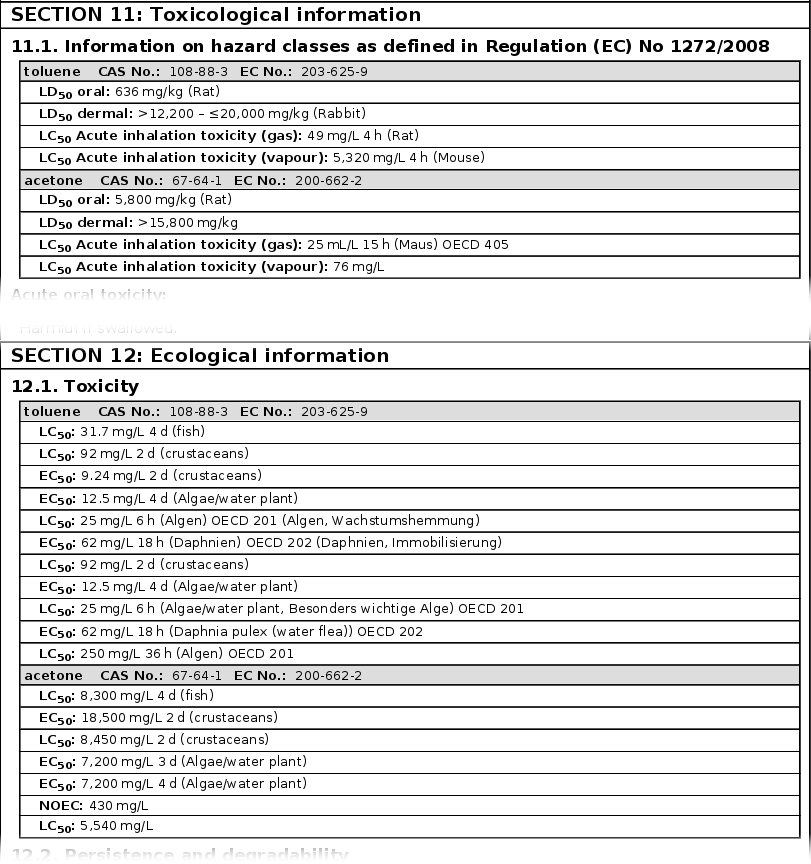Toxicity data for the safety data sheet
Toxicity data for the safety data sheet are not the easiest topic for SDS creation. But toxicity data are not only used and referenced by experts in sections 11 and 12. They also affect the classification calculation of your own mixture. Because of that, I summarise different sources and ways to get these requested data.
Supply chain benefits
If you as a formulator prepare safety data sheets from supplied products, then you always have a source for toxicity data – namely the safety data sheets made by the suppliers. In your role as a downstream user, you can and should use these for the specification of toxicity data in your own safety data sheets.
However, if data is missing, then other sources of information can be used. As part of a plausibility check (German website), you can also point out missing or presumably incorrect information to the SDS creator/supplier. In addition, there is also an obligation under REACH to pass on new identified hazards / relevant information to the supplier (REACH Regulation, Article 34). [1]

The ECHA database
When notifying and registering substances, data are collected from manufacturers and transferred to ECHA in dossiers. This data is displayed in ECHA’s C&L Inventory.
In most cases, the assignment of toxicity data is quite manageable. But sometimes, closer attention has to be given to the information in the corresponding dossier. Either way, data from ECHA’s website has a requirement to reference ECHA as a source. In addition, the rights for the toxicity data may still be held by third parties, as is also stated on the website.
Therefore, the owner’s consent may be necessary in order to further use these data in your own SDS. It is thus a comprehensive source, but not without obstacles and not always easy to read. [2]
Toxicity data for the safety data sheet and GESTIS
A national source from Germany is the GESTIS substance database of the Institute for Occupational Safety and Health of the German Social Accident Insurance. Depending on the sector, some substances can also be referenced from there. Here, too, the sources are to be stated accordingly; use for occupational safety and health and for obtaining information is permitted. [3]
Software assistance
Your safety data sheet software can support you in collecting the data and avoiding redundancies. Usually, toxicity data of a substance are stored centrally and referenced accordingly in the safety data sheets. This saves time by not having to enter them again in each safety data sheet and check them for completeness.
In our GeSi³ software, it is possible to add substances with toxicity data from the supplier SDS via SDBcheck® (German website) and to obtain data from the C&L Inventory yourself. The data is then used, among other things, for the classification calculation, for the information in the safety data sheet and also for PCN.

